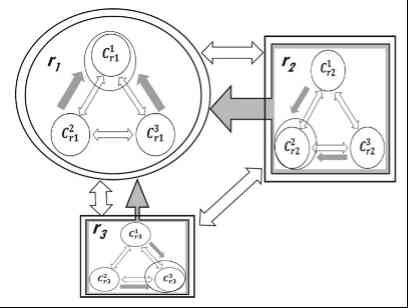“Development should be people-centered, reflecting the fundamental concern with
institutions, policies, and processes, while at the same time respecting the agency of all individuals.” -Emil Salim
For the longest time, MSMEs have been the lifeblood of the Indonesian economy, fostered as the backbone, acting as a nest for innovation, employment, and growth. But even as large policy strides are made by both the national and local governments to foster the development and prosperity of MSMEs, their welfare continues to hang in the balance. To describe Indonesia’s economy in the form of the human body, one will come to see that the spine comprises multiple micro, small, and medium enterprises (MSMEs). Each and everyone of them, though relatively tiny, contributes a significant chunk to keeping this body running. But I’d like to imagine the complexities of all these proprietors as the human brain.
Just like the human brain, current growth in Indonesia would not be possible if it weren’t for the developments happening with MSMEs. Contributing to 61% of the GDP and over 97% of total employment, MSMEs have driven the livelihoods of most households in Indonesia. This collective of enterprises certainly aren’t small in the aggregate sense, and the Indonesian government has realized that for a long time. There is no shortage of policies and aid programs that the government has taken to help them improve; but romanticized as helping the small people, spatial policies in particular lack a key understanding of the situations faced by these businesses, leading to inequalities between MSMEs and large businesses.
A Problem of Duality
Like listening to a friend’s rant, the underlying circumstances and background of these proprietors need to be fully understood before handing out advice. If two friends have differing understandings of a certain situation, there will most definitely be more problems than solutions. In the case of these developments, there exists a dualism; the coexistence and difference of two parts within a system. Dualism in MSMEs takes the form of the coexistence of large, more developed sectors, and small, more traditional sectors. It can also take the form of a productivity gap between regions, comparing output within provinces. But one thing that these contrasts have in common with one another is that they are tied to inequality within a system or region (Bourguignon and Morrisson, 1998, as cited in Azis, I. J. 2022). The varying environment between and within regions creates rifts, therefore policies would have to adapt to these nuances and cater towards the contrast in order to be properly effective.
The developments we are focusing on entail us to understand that development does not always happen in a linear fashion affecting everyone all at once. There are centrifugal forces of dispersion that allow for the spread of growth in an outward pattern, allowing for smaller businesses to reap the benefits that are provided by larger actors in the economy. Conversely, centripetal forces of agglomeration concentrate development specifically only on certain economic actors, like large corporations. It follows the pattern where both the actors and institutions that support them have the tendency to overlook the externalities of this concentration in favour of realizable short-term growth. (Azis, I. J. 2022)

Figure 1 illustrates how developments on MSMEs and large businesses may happen in a region. Since the forces of agglomeration are larger than dispersion, development is closely tied to the main actors that hold the most market share. Shown as the increase in C in each of the 3 regions, the regions do actually experience growth and development in the aggregate. But exactly like the Indonesian government, it fails to notice that all other components do not experience growth at all, leaving the net welfare of most people unaffected or potentially worse. (Boeke 1953). This is then exacerbated by lags in education, institutions, and financial literacies, which holds back MSMEs from growing past the informal sector.
Societal Barriers on Growth
The inequality between MSMEs and large corporations is then attributed to a dualism in social capital. There are disparities in trust, which drives cooperation, and in education which generates participation between MSMEs and the aggregate economy. A simple example of a startup compared to a street vendor proves this point. Street vendors rarely find ways to further develop their enterprises because they don’t feel the need to. These micro enterprises are often built by people just looking for a side hustle like mom’s MSMEs, or a vendor just trying to get by. But on the other hand, startups are always rearing to grow their business. This isn’t to say that the street vendors should be more proactive in developing their business, but more to highlight the different behaviours each actor takes upon. As a result of this, there is a disproportionate impact towards different actors in the market due to the agglomerative policies by the Indonesian government such as providing subsidies.

Problems such as credit rationing worsens this dualism even further as MSMEs find it harder and harder to borrow money. Banks by design are meant to lend money for the small actors in order for breakthroughs and growth, but adverse selection happens between businesses that look more promising compared to budding MSMEs. This is referred to as “Redlining”, where MSMEs pose a higher credit risk for the bank and cannot obtain credit with a given supply of loanable funds unless the lending criteria is relaxed. Figure 2 shows this by indicating how Indonesia is an outlier amongst other countries. Where MSME density typically has a positive correlation to SME lending, it becomes paradoxical that we have the densest distribution, but a lack of institutions and socialization to support MSME lending.










